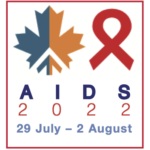Using PrEP during pregnancy is safe for children
1 September 2022. Related: Conference reports, Pregnancy, Paediatric care, World AIDS 24 Montreal 2022.
Polly Clayden, HIV i-Base
 No differences in growth or neurodevelopmental outcomes were seen in young children with and without maternal PrEP exposure. These results were from an ongoing evaluation of prenatal PrEP in Western Kenya presented at AIDS 2022.
No differences in growth or neurodevelopmental outcomes were seen in young children with and without maternal PrEP exposure. These results were from an ongoing evaluation of prenatal PrEP in Western Kenya presented at AIDS 2022.
WHO recommends PrEP during pregnancy to those at risk – including women in high prevalence settings. Several high burden countries are considering rolling out or have already launched PrEP. Kenya was one of the first countries to include this population in national guidelines in 2017.
Safety data to date are reassuring, with studies showing no adverse pregnancy outcomes following prenatal PrEP use. But numbers are small as some analyses are from PrEP efficacy trials that typically exclude pregnant women or discontinue PrEP use with pregnancy. Evaluations have less than one year of follow-up and have not assessed neurodevelopmental outcomes among PrEP-exposed infants.
PRIMA was a cluster randomised trial conducted in 20 mother and child health clinics in Kenya. Participants (n=4447) were followed for nine months post-partum.
The data presented were from the PRIMA extension study that is following a subset of four facilities until 60 months post-partum. Data were collected between October 2020 and June 2022 at six month intervals and represented 24 to 36 months follow up.
Trained study nurses conducted anthropometric measurements and evaluated neurodevelopment using the Ages and Stages Questionnaire (ASQ), an early developmental screener.
There were 664 mother-child pairs included in the analysis and 17% (119) had any PrEP exposure during pregnancy.
Median maternal age was 28 years and median child age was 26 months at enrollment into the extension cohort. There was no difference in marital status, maternal education, number of living children and preterm birth between participants with and without PrEP exposure. But those who took PrEP during pregnancy more frequently reported a partner with HIV: 13 vs 3%.
PrEP was started at a median of 27 weeks gestation and exposure during pregnancy was for a median of 2.4 months; 54% of 119 participants continued PrEP 9 months post-partum.
At 24-months follow up, there was no difference in median weight between children with any or no PrEP exposure during pregnancy: adjusted coefficient: -0.07 kg (95% CI -0.83 to 0.69), p=0.783. There was also no difference in length between the two groups: -0.61 (95% CI -1.85 to 0.63), p=0.217.
Differences in child growth indicators between the two groups remained non-significant at 30 and 36 months follow up.
Prenatal PrEP exposure was also not associated with any adverse growth outcomes (underweight or stunting) at 24–36 months. Nor was it associated with adverse developmental outcomes (overall ASQ scores) at 30 and 36 months.
comment
These data support previous small studies showing safety of PrEP during pregnancy and add to the (scant) data available on antiretroviral exposure without HIV exposure on children’s outcomes.
The PRIMA extension will continue to follow this subset through 60 months of age and the investigators are evaluating growth and bone mineral density (DEXA). They are also quantifying PrEP exposure with TDF levels measured in hair samples and dried blood spots and evaluating neurocognition with the Malawi Development Assessment tool.
This information will be very welcome.
Reference
Gómez L et al. Association of prenatal PrEP exposure with neurodevelopmental and growth outcomes beyond 24 months among Kenyan children. AIDS 2022. Montreal, Canada. 29 July – 2 August. Oral abstract OAC05.
https://programme.aids2022.org/Programme/Session/163 (abstract)
https://conference.aids2022.org/media-2085-packaging-hiv-prevention-for-different-populations (webcast)

